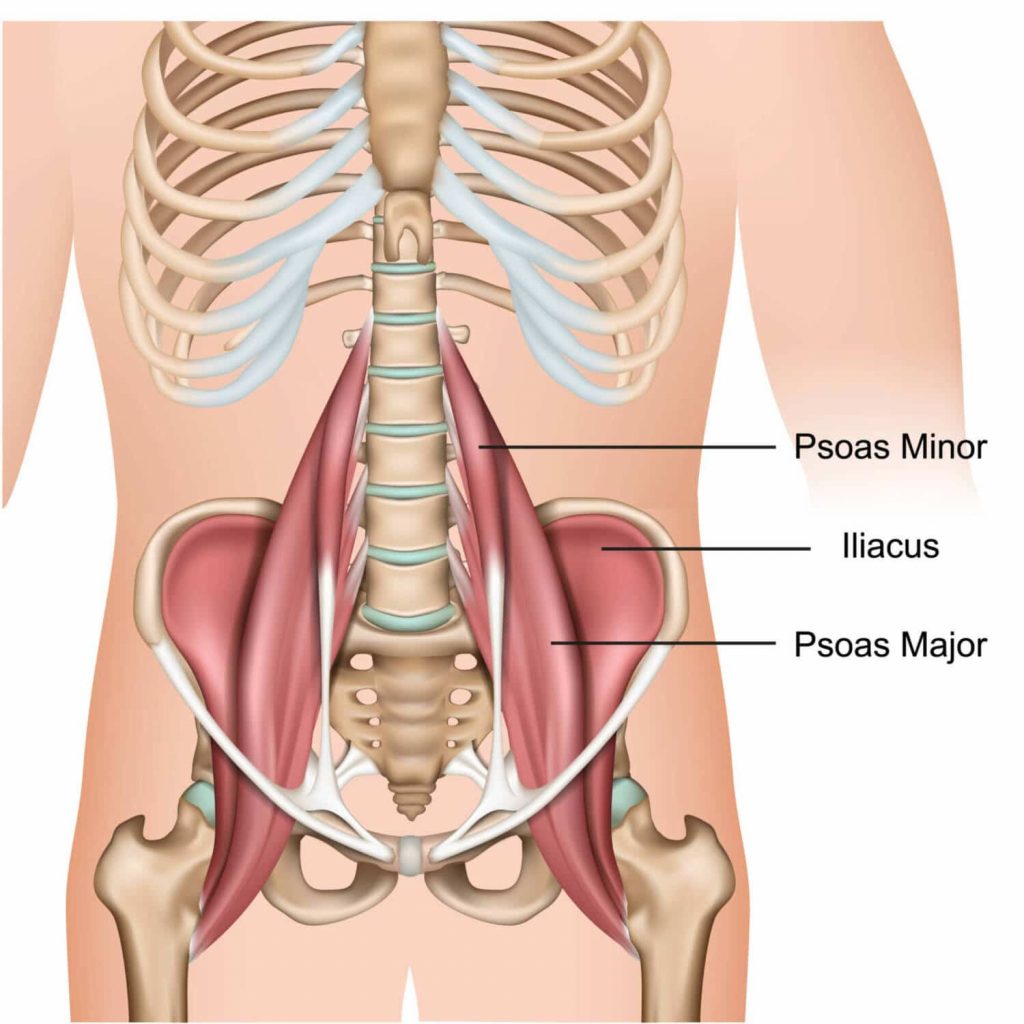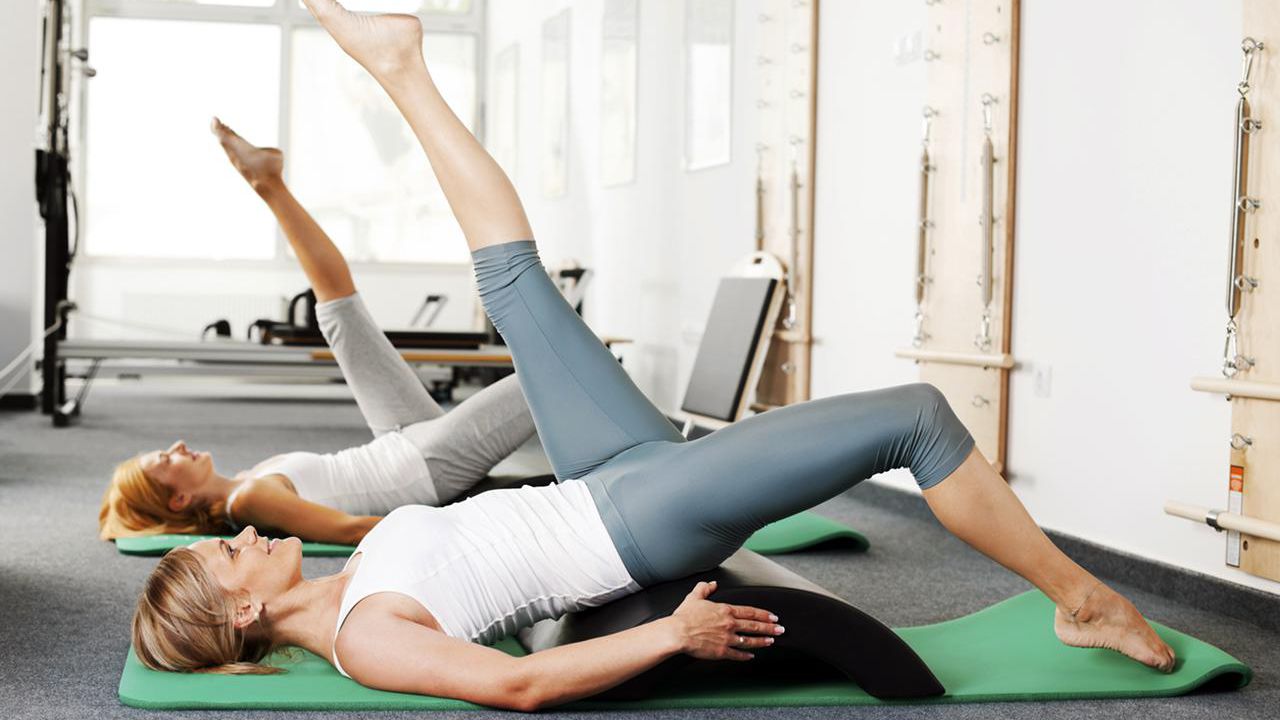This article will provide information on how to strengthen the psoas muscles, it’s function, common problems that individuals have and some options on how to remedy issues.
Where is The Psoas And What Does It Do?
So here you can see the Psoas muscle and the Iliacus muscle. The Iliacus is important because it also has an effect on the Psoas because as you can see they merge together and insert in the same part of the femur (thigh bone). The combination of the two muscles is called the Iliopsoas muscle.
The Psoas is responsible for a few different movements. The primary movement is hip/trunk flexion. It works by flexing the hip joint and lifting the upper leg towards your torso. It provides stability at the hip joint and also assists in lateral flexion of the trunk. So as you can see it is very easy for this muscle to become overworked, ESPECIALLY when it comes to top level athletes involved with any form of running, jumping, fighting (kicking, wrestling, jiu jitsu) or any combination thereof.
The two primary factors that cause issues with the Psoas is that it’s either short and weak, or it’s overactive/strong and short. We live in a society now where sitting is what we do the most.
First let’s take a look at some individuals that may suffer from a short and weak Psoas muscle and learn how to strengthen the psoas .

The Sedentary 9-5 Office Worker
We sit in our cars to commute to work, then sit at work for 6-8 hours, sit again to drive home, then sit again to eat dinner and relax with your family or friends. The only time it might get to relax and stretch out is when you’re asleep, which is unlikely because who sleeps in a perfectly tall and lengthened position…vampires, and they don’t exist…I hope.
So with all this sitting, the Psoas is always in a shortened position, then it wants to remain in that position because that’s where it stays for the majority of the day.
Second, let’s take a look at individuals that may require the need to stretch and strengthen the psoas muscle.
The Athlete/Avid Gym Goer
This next group can range from the office worker who follows a strength training routine to professional athletes who literally exercise for a living. The office worker who sits for the majority of the day keeping the psoas short, then goes to the gym and does awesome workouts, but pays no attention to stretching, flexibility and mobility exercises. They are training the Psoas muscle to be very strong in this shortened position, which is a double edged sword. Yes the Psoas is strong, but it’s only strong within a very short range of motion. Then when we try to force it to be strong outside of a range it’s not comfortable, that’s when injuries happen.
The Mixed Martial Arts athlete who trains multiple times per day, but ignores additional mobility and flexibility exercises outside of the couple used in the warm up and/or cool down of a given training session. An even worse situation happens because of how the Psoas muscle is being used. Picture a day of training involving Jiu Jitsu, Kickboxing and Wrestling plus adding in some light MMA sparring rounds. Between being in guard, throwing high kicks and knees and various different wrestling positions, the Psoas is being used constantly, from maximal isometric contractions to squeeze the hips or resist someone trying to pass your guard to high velocity explosive movements to throw high kicks or knees.
What Happens When The Psoas Gets Tight?
If we look at the origin of the Psoas muscle you can see it comes from the lumbar vertebrae (your lower back). If this muscle is overly tight it is putting constant pulling pressure on these vertebrae which typically results in light to severe back pain depending on the severity.
The athlete / avid gym goer may feel more back pain because of how strong the muscle is pulling on the lumbar spine, possibly resulting in compression of the discs and potentially putting pressure on some of the nerves that run through the lumbar vertebrae. Whereas the sedentary office worker will typically feel more of a constant dull achy pain in the lower back area.
The athlete needs to focus a good amount of extra time on additional mobility, flexibility, stability and strengthening exercises to keep the Psoas muscle moving well and strong through it’s full range of motion. If we lengthen the muscle but neglect to strengthen it at it’s new length it will just pull itself back into the short position where it’s comfortable. Utilizing end range strengthening techniques in combination with proper flexibility and mobility exercises is the best way for any individual to avoid having issues with their Psoas.
The sedentary office worker can use short standing breaks throughout the day. For every minute you’ve been sitting; stand up and walk or do some light stretches for that number of seconds. For example, if you’ve been sitting for 30 minutes, take a 30 second break to stand up, stretch your arms to the ceiling and move your legs. This is an easy first step that you can implement into your day that will help prevent the Psoas from remaining in it’s shortened position.
As a further step you can make yourself a 10-15 minute mobility routine that you perform daily to help keep your hips healthy and strengthen the psoas.
Author Bio
ASN Coaching offers a variety of in-person and online supports in the areas of:
- Exercise & Fitness Coaching
- Habits, Behaviors & Wellness Coaching
All coaching options are customized to you and your goals and include private check-ins, unlimited email support + much more (see their website for more details). Coaching is geared towards both those who have experience in the weight room, and beginners. They can also customize your program to at-home or gym-based; there are no limitations.








